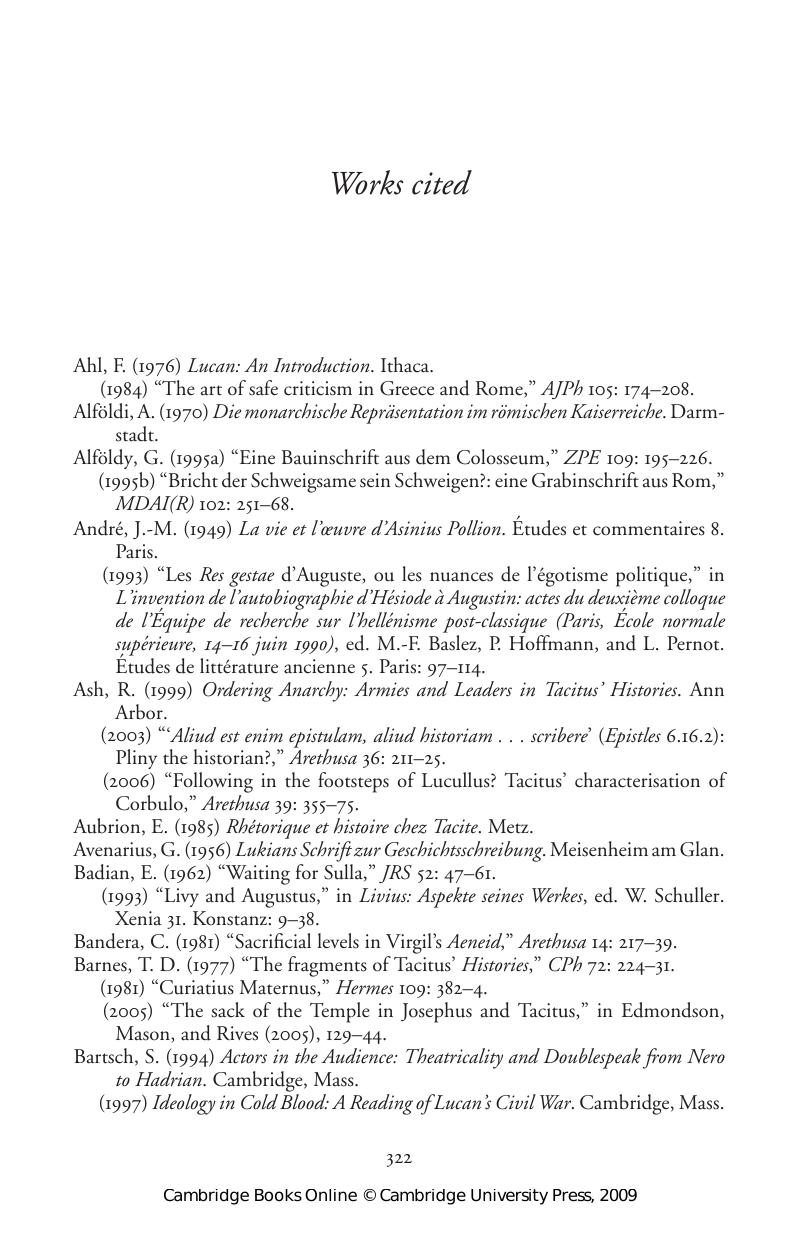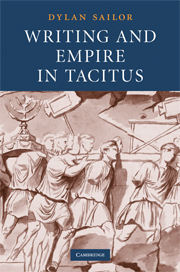Book contents
- Frontmatter
- Contents
- Acknowledgments
- List of abbreviations and editions used
- Introduction: a life, in fragments
- Chapter 1 Autonomy, authority, and representing the past under the Principate
- Chapter 2 Agricola and the crisis of representation
- Chapter 3 The burdens of Histories
- Chapter 4 “Elsewhere than Rome”
- Chapter 5 Tacitus and Cremutius
- Conclusion: on knowing Tacitus
- Works cited
- Index of passages discussed
- General index
- References
Works cited
Published online by Cambridge University Press: 22 September 2009
- Frontmatter
- Contents
- Acknowledgments
- List of abbreviations and editions used
- Introduction: a life, in fragments
- Chapter 1 Autonomy, authority, and representing the past under the Principate
- Chapter 2 Agricola and the crisis of representation
- Chapter 3 The burdens of Histories
- Chapter 4 “Elsewhere than Rome”
- Chapter 5 Tacitus and Cremutius
- Conclusion: on knowing Tacitus
- Works cited
- Index of passages discussed
- General index
- References
Summary

- Type
- Chapter
- Information
- Writing and Empire in Tacitus , pp. 322 - 343Publisher: Cambridge University PressPrint publication year: 2008



